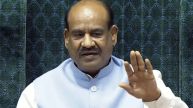By Shivaji Sarkar
The “King Dollar” is feeling threatened—not by a rival superpower, but by a non-currency from BRICS. In response, President Donald Trump has proposed a 10 percent additional tariff on imports from the bloc. The threat may seem minor but Trump’s reaction tells a different story.
Much like the mythical tale of a dwarf almost defeating Arjun, the Mahabharata’s warrior-hero, BRICS—despite lacking a common currency—has rattled Washington. Why else would Trump warn that losing the US dollar as the global standard would be akin to losing a “major world war”?
This is not just bluster. It signals a grave threat in the making. Trump’s brand of America First nationalism is again squaring off against an emboldened, expanded BRICS alliance. This isn’t an ideological standoff of capitalism versus socialism; it’s a structural battle—unilateralism versus multipolarity, petrodollar dominance versus de-dollarisation, US-led hegemony versus a Global South resurgence.
At the heart of this confrontation lies an entire worldview. BRICS—now expanded to include Iran, Egypt, Saudi Arabia, Ethiopia, and the UAE—represents over 40 percent of the world’s population and more than 30 percent of global GDP (PPP). Over the past decade, BRICS has swelled from five to ten members, with Indonesia joining this year. Saudi Arabia is listed as a member but has yet to formally confirm its status. Additionally, nine partner countries and dozens more are queuing up to join.
Trump, who scorns multilateralism and prefers bilateral muscle-flexing, views this growing coalition as a direct threat to the post-World War II American-led order.
He once threatened sanctions on European firms dealing with Iran. Now, with BRICS pushing for a bloc payment system—potentially involving a basket of mutual currencies—his old playbook of dollar leverage is under siege. No surprise, then, that he’s talking tariffs, global tax threats, and trade punishments for states that defy Washington’s currency diktat.
At its latest Brazil summit, BRICS made two significant moves: first, calling for a replacement of the Bretton Woods institutions; second, backing the IMF’s 16th General Review of Quotas, urging swift implementation. More provocatively, it extended strong support to Iran in its confrontation with Israel.
The joint BRICS statement pulled no punches, condemning the US-Israeli bombardments of Iran in June as a “blatant breach of international law” and advocating for a Palestinian state. Though it remained silent on the Russia-Ukraine conflict—where Russia is a central actor—it criticized Ukrainian strikes on Russian territory.
Meanwhile, on July 11, India under Prime Minister Narendra Modi revised its proposal to impose retaliatory duties under WTO provisions in response to US tariffs on steel and aluminium—especially after Trump announced additional hikes. New Delhi’s move to suspend concessions is intended as a bargaining chip at continuing trade talks.
Still, trade among BRICS nations remains modest. Intra-BRICS trade accounted for just 3 percent—about $1 trillion—of the global $33 trillion trade volume in 2024. India’s combined trade with Brazil and South Africa stands at around $31 billion.
Dollar dominance still looms large over global commerce. But in this context, the BRICS initiative is undeniably bold.
Ambitions like a gold-backed common currency, dubbed the “Unit,” have stalled. India, wary of China’s yuan hegemony, has rejected the plan. Brazil, the 2025 summit host, also prefers local currency trade over a single BRICS currency.
“India, together with Brazil, is trying to balance the anti-Western messaging from BRICS, which is dominated by China and Russia,” says Alicia Garcia-Herrero, chief Asia-Pacific economist at Natixis.
Meanwhile, Trump seems determined to turn the clock back—reviving a unipolar world where the US remains the de facto and de jure global power.
BRICS Grabs Energy Diplomacy
Oil remains a decisive front. The inclusion of Saudi Arabia, UAE, and Iran into BRICS 2.0 signals a strategic shift: oil exporters are slowly decoupling from dollar-only trade. China is pushing for yuan-based oil contracts; Russia has moved to rouble settlements; and even former enemies Iran and Saudi Arabia are cooperating.
Trump, in contrast, is preparing to flood the world with US shale, roll back climate pacts, and resurrect the Reagan-era fossil fuel doctrine. His likely gutting of green subsidies and return to oil diplomacy may face a BRICS counter-strategy aimed at diluting dollar dominance in energy.
Development Battle: NDB vs Bretton Woods
BRICS’ New Development Bank (NDB), though modestly capitalised, offers an alternative to the IMF and World Bank—particularly appealing to nations weary of western conditionalities. The NDB extends credit without the strings that often accompany loans from Washington-based institutions.
Trump, who previously slashed US funding to WHO and sparred with WTO and NATO, is unlikely to support any multilateral setup that doesn’t obey his directives. In contrast, BRICS is building institutional alternatives—creating a vacuum that many neutral or non-aligned countries may now gravitate toward.
Military Undercurrents: Security Tensions on the Rise
Though not a military bloc, BRICS shows signs of developing a strategic security understanding—especially between Russia and China. Meanwhile, Trump is expected to ramp up Indo-Pacific militarisation, provoke Taiwan confrontations, and push for NATO expansion.
His erratic past—pulling out of Syria, threatening to exit NATO, abandoning Afghanistan—has already diminished US credibility. If BRICS maintains a steady hand in promoting regional security dialogues, it could further shift the global balance.
India’s Dilemma: Swing State in a Divided World
India walks a tightrope. As a founding BRICS member and a key US strategic partner through the QUAD and bilateral deals, it is under pressure to pick sides. Trump may again press India to align against China, Iran, or Russia.
Yet New Delhi appears to be hedging: buying discounted Russian oil, testing rupee-based trade with Africa, investing in Iran’s Chabahar port, and simultaneously deepening defence ties with Washington. A heavy-handed Trump approach could push India further into the BRICS fold.
A New Global Fault Line
BRICS apparently is no longer a talking shop. It is a growing counterweight with economic muscle, political ambition, and strategic unity.
This is not just about Trump versus BRICS. It’s a battle between legacy dominance and emergent pluralism. The unipolar world is fading, and Trump’s familiar tactics may see a tough challenge against an unfamiliar, more coordinated resistance.
The new Cold War won’t be fought over ideology—it will be fought over systems, influence, and who gets to write the rules. And this time, the Global South isn’t just a bystander. It’s a player. And it’s choosing sides.
About The Author
The writer was Sr Editor with Financial Express, Prof, IIMC Delhi and writes on Indian and world socio-politico-economic issues.











